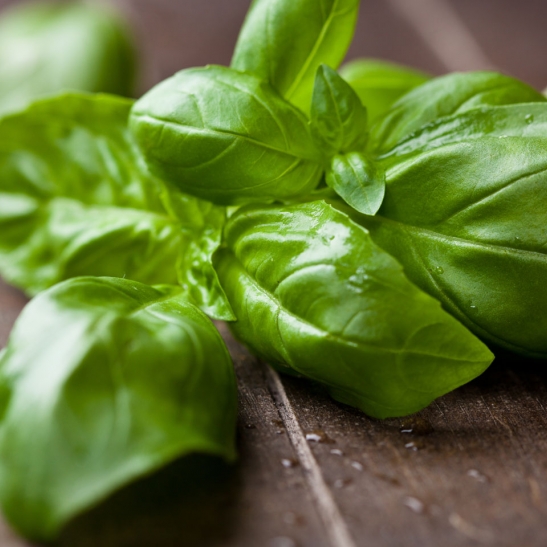
Basil
Basil
An unmistakable scent: basil is the king of aromatic herbs.
Good anti-inflammatory and antibacterial, it is also rich in beta-carotene.
It has been used in Italy for centuries, and today it is famous all around the world thanks to the amazing Genoese pesto.
An original way to consume basil is to fry it in batter and serve it as a side dish: a delicious alternative to French fries!
AVAILABILITY: Year-round.
STORAGE: Recommended between 8 and 12° C.
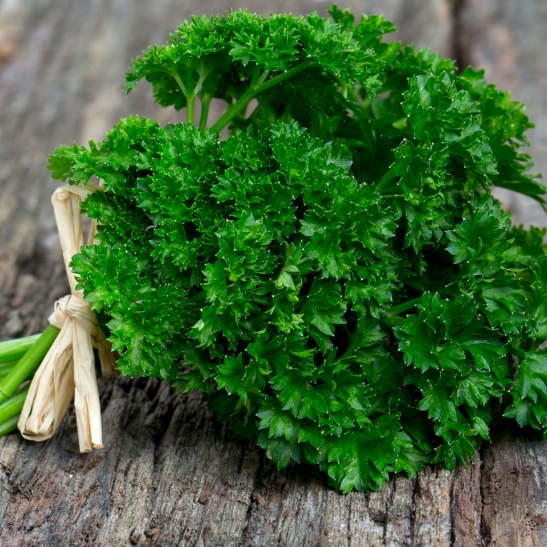
Parsley
Parsley
Fresh, slightly spicy, and above all healthy.
What many people don't know is that this fresh herb is rich in vitamins and minerals, such as vitamin K, which helps the body absorb calcium.
This bright green grass comes in several varieties. Flat-leaf parsley and curly parsley are directly related.
AVAILABILITY: Year-round.
STORAGE: Recommended between 2 and 4° C.
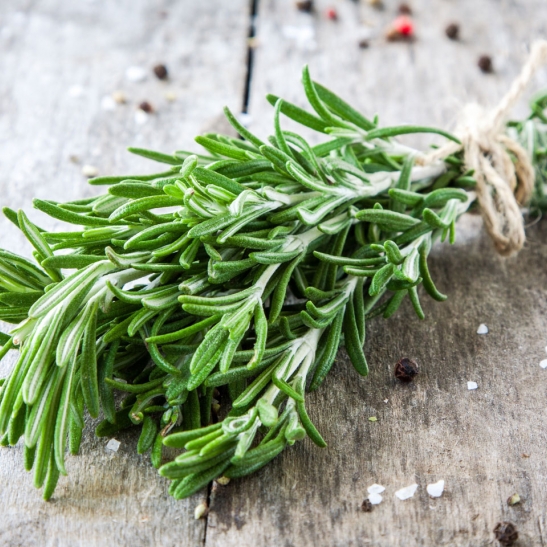
Rosemary
Rosemary
The aroma of rosemary is very distinctive and recognizable.
The taste is intense and reminiscent of Mediterranean cuisines, but use it sparingly: it will easily prevail over your recipe.
The twigs grow on a hardy shrub, with needle-like leaves in two colours: dark green on top, white below.
AVAILABILITY: Year-round.
STORAGE: Recommended between 2 and 4° C.
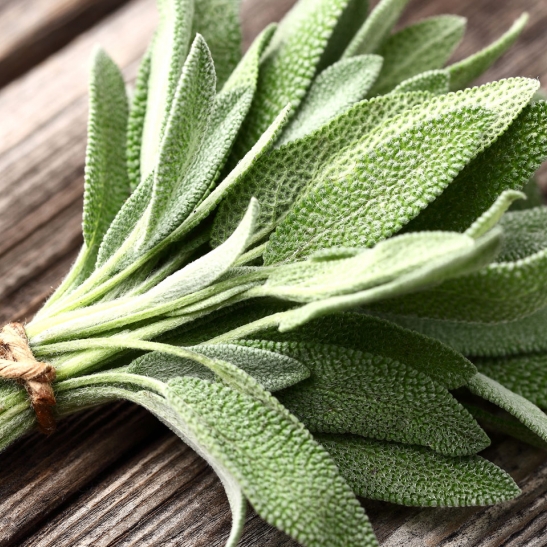
Sage
Sage
Sage is an aromatic and officinal plant widespread in temperate regions.
It is well known for its warm and penetrating aroma, therefore used in the kitchen as a seasoning, adapting to many dishes of Italian cuisine.
In Italian cuisine, sage can appear from appetizers to desserts. Despite its variety of uses, this plant is mainly used to flavour meat.
One of the main characteristics of this aromatic herb is its great digestive power; for this reason, it is often used in herbal teas or decoctions at the end of a meal.
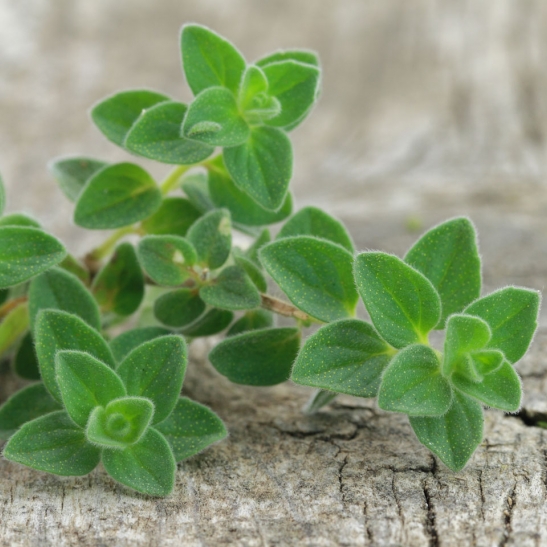
Oregano
Oregano
In the dry form, the influence of oregano on recipes is stronger, but in many dishes the slightly milder taste of fresh grass is preferable.
The sturdy twigs are green-purple. Green, pointed leaves sprout. It is important to add fresh oregano at the end of cooking.
AVAILABILITY: Year-round.
STORAGE: Recommended between 2 and 8° C.
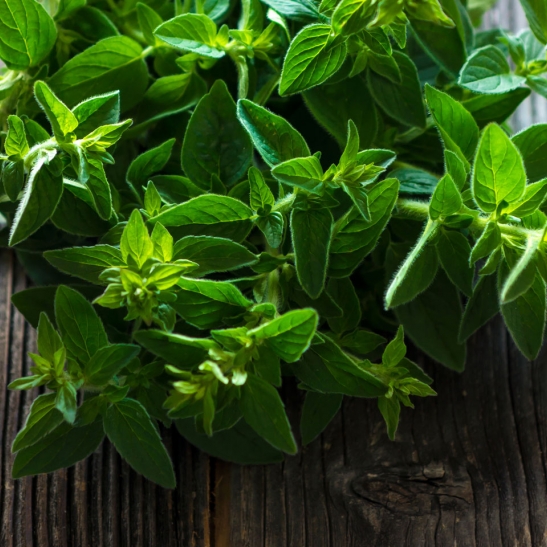
Marjoram
Marjoram
The herb has been used for at least twenty centuries, although fresh marjoram was known primarily as a remedy for ailments back then.
Nowadays, this herb is mainly known in Mediterranean cuisine. Marjoram is instantly recognizable in many Provencal recipes, often paired with oregano.
The perfume is intense, almost like thyme; with a fresh, sweet, and salty flavour. Compared to oregano, marjoram has a slightly milder flavour.
AVAILABILITY: Year-round.
STORAGE: Recommended between 2 and 4° C.
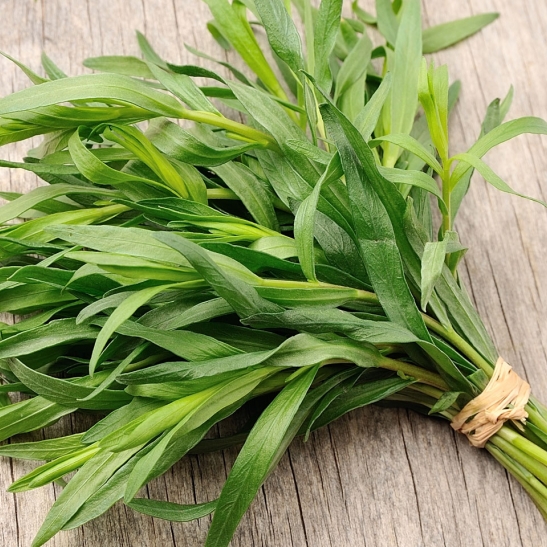
Tarragon
Tarragon
Although tarragon originates from Central Asia, it is the great French chefs who have given this herb its reputation.
It is a green herb with a delicate and slightly sweet aroma that tends slightly to anise and pepper.
Elongated thin leaves grow on the long stems of the tarragon plant.
AVAILABILITY: Year-round.
STORAGE: Recommended between 2 and 8° C.
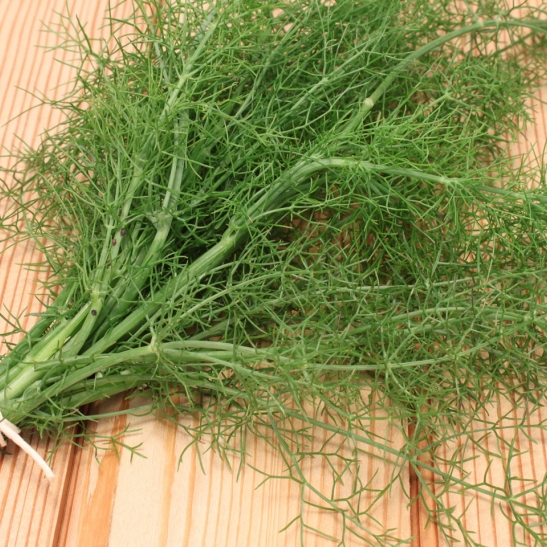
Fennel
Fennel
Fennel or wild fennel is an herbaceous plant that can grow spontaneously on the coasts of the Mediterranean.
It is a very versatile food. It's used raw to enrich mixed salads, but you can also cook it to enrich the most varied culinary preparations.
Fennel has a good amount of water, but it also contains vitamins, minerals, and numerous molecules with nutraceutical value, such as phenolic compounds and flavonoids.
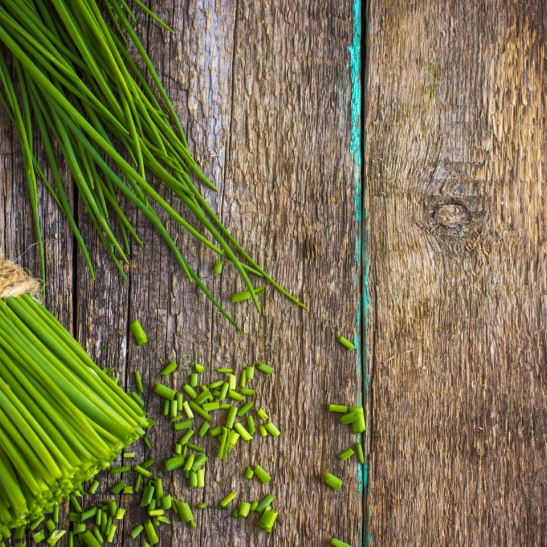
Chives
Chives
It is an excellent alternative to the more well-known onion flavour and has a taste that goes perfectly with cooked vegetables, meat and fish.
The plant is often used to flavour green or tomato salads, omelettes, potatoes, soups and quiches. Together with celery and carrot, it is a delicate alternative for sautéing sauces.
AVAILABILITY: Year-round.
STORAGE: Recommended between 2 and 8° C.
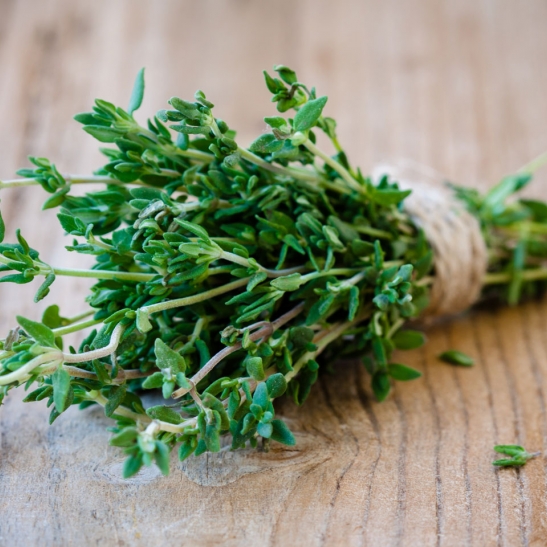
Thyme
Thyme
Thyme is one of the most popular herbs of Mediterranean cuisine, it is excellent for flavouring dishes and, thanks to its digestive properties, it is used in numerous liqueurs.
We suggest you a tasty recipe that is quick to prepare: a savoury zucchini and thyme pie!
AVAILABILITY: Year-round.
STORAGE: Recommended between 2 and 4° C.
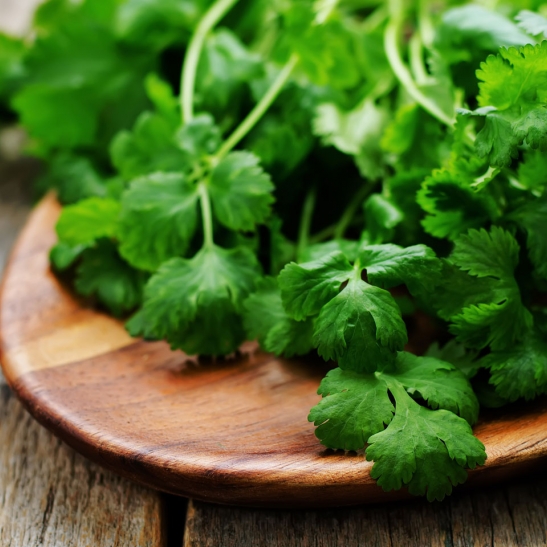
Coriander
Coriander
Coriander isn't just similar in appearance to parsley, which the herb is related to, but the flavour is also very similar, although fresh cilantro has a stronger one.
The taste is best described as slightly sweet, with a hint of anise.
AVAILABILITY: Year-round.
STORAGE: Recommended between 2 and 4° C.
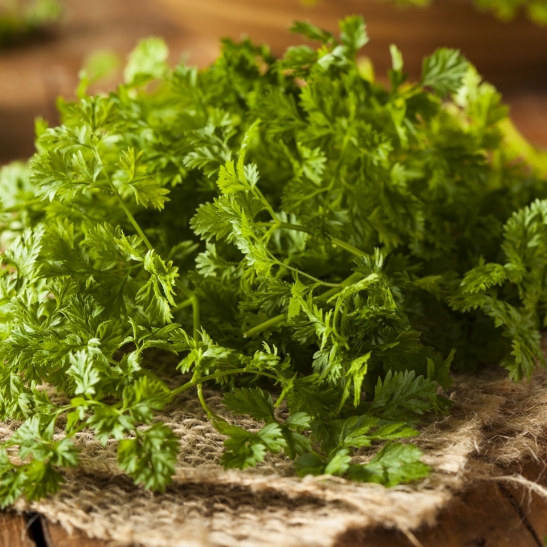
Chervil
Chervil
This aromatic herb is very similar to parsley, much more delicate.
The chervil leaves are light green and turn red in autumn.
The aroma is reminiscent of parsley and anise and is added to soups, broths, white meats such as chicken and rabbit or eggs.
It also goes well with legumes such as beans, broad beans and peas.
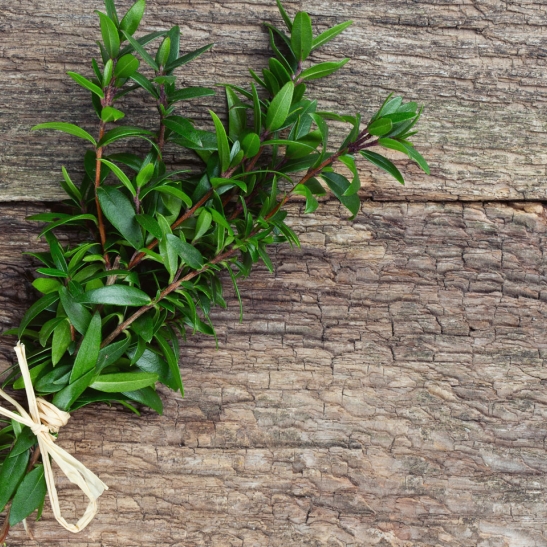
Myrtle
Myrtle
Myrtle immediately reminds us of Sardinia and the very famous liqueur!
Have you ever thought of using it in the kitchen? Not only for jam but also real recipes.
We want to give you a first suggestion, try marinating the chicken in myrtle leaves, you will not be disappointed!
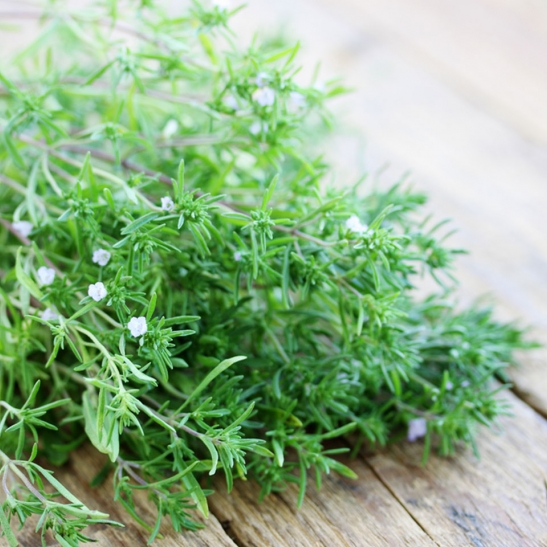
Savory
Savory
Savory is an aromatic herb native to the Mediterranean and is rich in active ingredients, vitamins and mineral salts.
In the kitchen, it goes well with salads, cheeses, meat and for the preparation of sauces and gravies.
It can be used both fresh and dried, while a very particular combination is that with legumes since it promotes digestion.
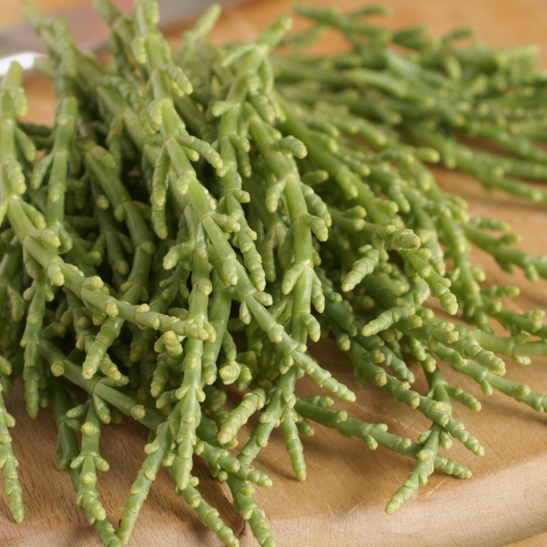
Glasswort
Glasswort
Glasswort is a sea vegetable grown in saline conditions.
It is no surprise that the taste also has that salty, savoury flavour.
It can be cooked but raw it is good too, as an unexpected salty addition to a salad, for example.
AVAILABILITY: Year-round.
STORAGE: Recommended between 2 and 4° C.
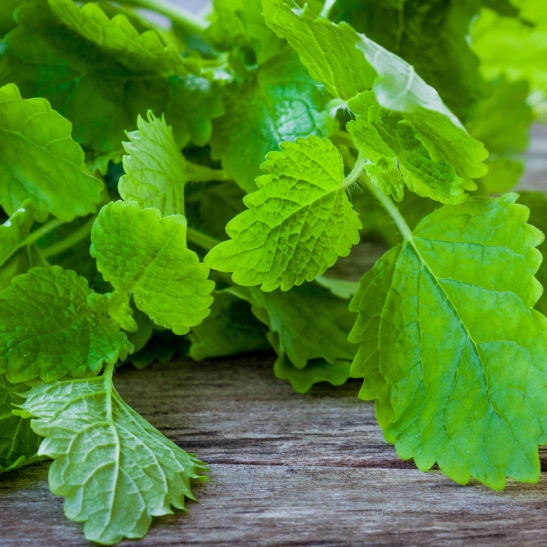
Melissa
Melissa
Melissa is a plant that has boasts various antispasmodic and antioxidant properties and effective against insomnia and stress.
Not everyone knows that leaves can also be used in cooking as a cooking ingredient.
They can be added to salads, taking advantage of their lemon-like flavour, with a slight mentholated aftertaste.
You can use them to flavour meat, soups, legume soups or to make excellent liqueurs.
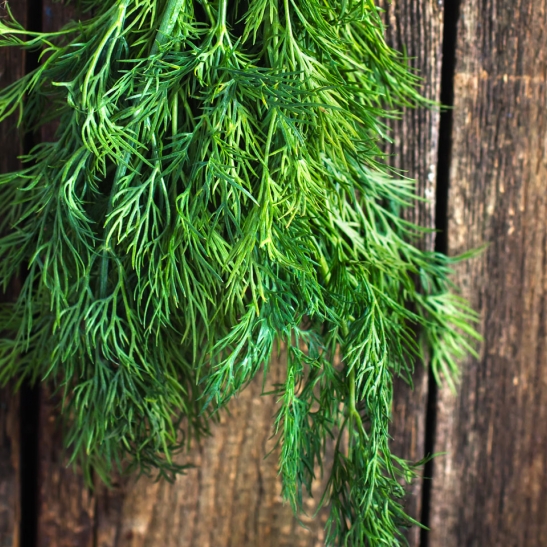
Dill
Dill
Dill is an aromatic plant used in many areas of the world.
It is not uncommon to find bread or cheeses flavoured with the slight aroma of anise and fennel of dill.
It can also be used to flavour fish dishes, salads, eggs, and potatoes.
AVAILABILITY: Year-round.
STORAGE: Recommended between 2 and 8° C.
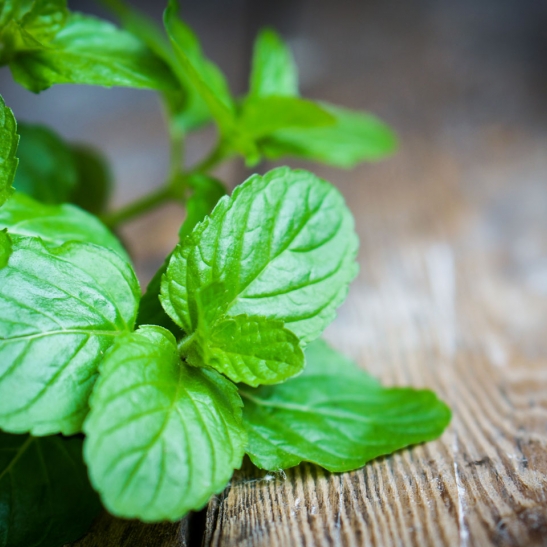
Mint
Mint
The mint leaves have an unmistakable scent!
You can use them in many dishes to give a fresh and summery touch.
Perfect ally of seasonal drinks, it is just what you need to fight the first heat!
AVAILABILITY: Year-round.
STORAGE: Recommended around 2° C.

Sakura Mix
Sakura Mix
Garden Frutta Sakura Mix sprouts lend themselves to enriching salads, canapés, appetizers, soups, and broths.
They are ideal for flavouring extra virgin olive oil and cheeses to create delicious alternatives to the classic Genoese pesto with oriental and intense notes.
Fresh sprouts are versatile, also use them to decorate delicious fish dishes, croutons, and the most delicious fillings!
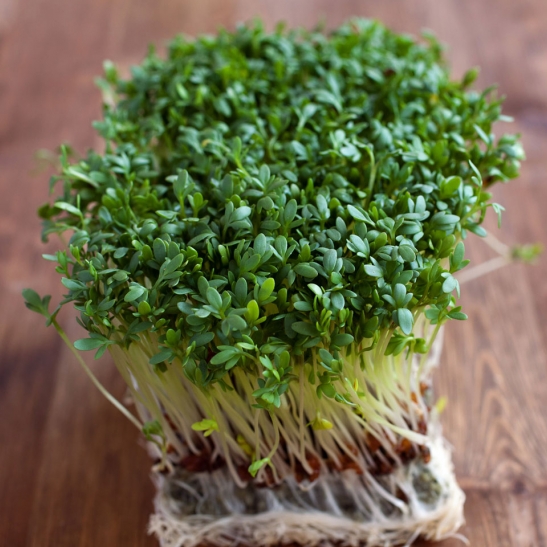
Cress
Cress
It is an edible plant characterized by tall, thin stems with oval-shaped leaves.
It tastes similar to a fresh pea, so much so that it goes perfectly with dishes with a strong and sour taste.
Good to eat and beautiful to look at for its decorative shape.
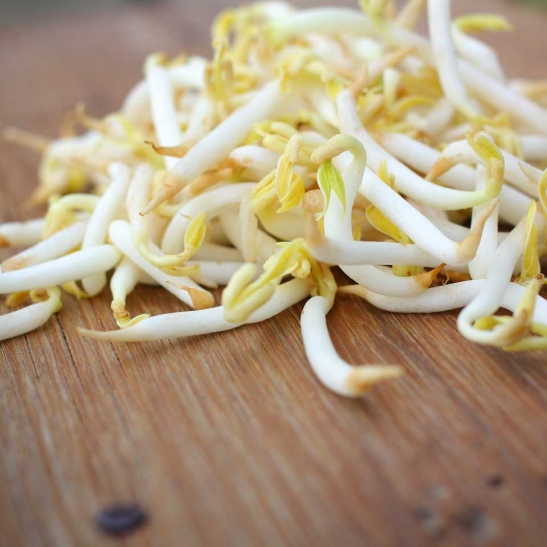
Soybean
Soybean
Soybeans are very rich in water, vitamins, especially vitamin C, and mineral salts that are precious for our body.
They can be considered natural supplements that also help us stimulate diuresis and detoxify the body.
Soybeans bring various benefits to our bodies: they help keep cholesterol at bay by thinning the blood; support the work of the intestine thanks to the supply of fiber that promotes regularity and counteracts constipation.
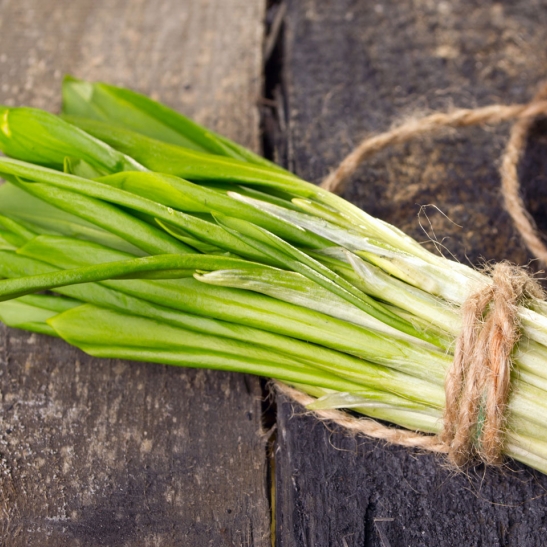
Wild garlic
Wild garlic
Wild garlic is a plant that grows near humid places. It is almost unknown in Italy and is rarely used in the kitchen.
Both the bulb and the leaves can be used. The taste of wild garlic is stronger than common garlic.
In particular, the minced bulb can be used to season sauces, to flavour potatoes, soups, and omelettes.
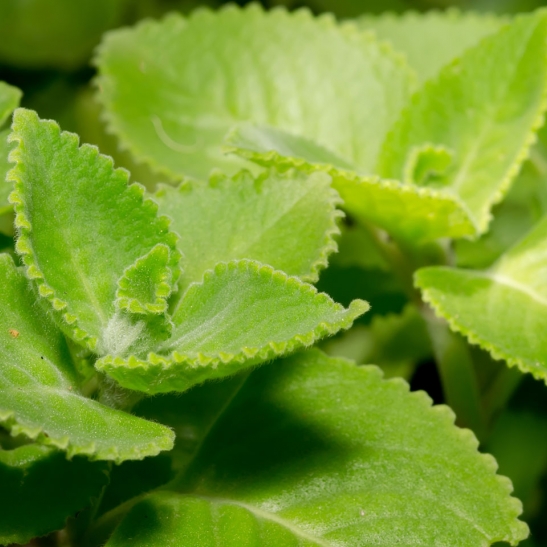
Borage
Borage
Borage is a wild plant widely used in cooking. The leaves are used to remove the fluff, usually after boiling.
The leaves are excellent fried with batter or used to fill ravioli and tortellini or simply chopped and made into an omelette.
They can also be used to flavour various dishes with their sour taste that vaguely recalls cucumber.

Basil
Basil
An unmistakable scent: basil is the king of aromatic herbs.
Good anti-inflammatory and antibacterial, it is also rich in beta-carotene.
It has been used in Italy for centuries, and today it is famous all around the world thanks to the amazing Genoese pesto.
An original way to consume basil is to fry it in batter and serve it as a side dish: a delicious alternative to French fries!
AVAILABILITY: Year-round.
STORAGE: Recommended between 8 and 12° C.

Parsley
Parsley
Fresh, slightly spicy, and above all healthy.
What many people don't know is that this fresh herb is rich in vitamins and minerals, such as vitamin K, which helps the body absorb calcium.
This bright green grass comes in several varieties. Flat-leaf parsley and curly parsley are directly related.
AVAILABILITY: Year-round.
STORAGE: Recommended between 2 and 4° C.

Rosemary
Rosemary
The aroma of rosemary is very distinctive and recognizable.
The taste is intense and reminiscent of Mediterranean cuisines, but use it sparingly: it will easily prevail over your recipe.
The twigs grow on a hardy shrub, with needle-like leaves in two colours: dark green on top, white below.
AVAILABILITY: Year-round.
STORAGE: Recommended between 2 and 4° C.

Sage
Sage
Sage is an aromatic and officinal plant widespread in temperate regions.
It is well known for its warm and penetrating aroma, therefore used in the kitchen as a seasoning, adapting to many dishes of Italian cuisine.
In Italian cuisine, sage can appear from appetizers to desserts. Despite its variety of uses, this plant is mainly used to flavour meat.
One of the main characteristics of this aromatic herb is its great digestive power; for this reason, it is often used in herbal teas or decoctions at the end of a meal.

Oregano
Oregano
In the dry form, the influence of oregano on recipes is stronger, but in many dishes the slightly milder taste of fresh grass is preferable.
The sturdy twigs are green-purple. Green, pointed leaves sprout. It is important to add fresh oregano at the end of cooking.
AVAILABILITY: Year-round.
STORAGE: Recommended between 2 and 8° C.

Marjoram
Marjoram
The herb has been used for at least twenty centuries, although fresh marjoram was known primarily as a remedy for ailments back then.
Nowadays, this herb is mainly known in Mediterranean cuisine. Marjoram is instantly recognizable in many Provencal recipes, often paired with oregano.
The perfume is intense, almost like thyme; with a fresh, sweet, and salty flavour. Compared to oregano, marjoram has a slightly milder flavour.
AVAILABILITY: Year-round.
STORAGE: Recommended between 2 and 4° C.

Tarragon
Tarragon
Although tarragon originates from Central Asia, it is the great French chefs who have given this herb its reputation.
It is a green herb with a delicate and slightly sweet aroma that tends slightly to anise and pepper.
Elongated thin leaves grow on the long stems of the tarragon plant.
AVAILABILITY: Year-round.
STORAGE: Recommended between 2 and 8° C.

Fennel
Fennel
Fennel or wild fennel is an herbaceous plant that can grow spontaneously on the coasts of the Mediterranean.
It is a very versatile food. It's used raw to enrich mixed salads, but you can also cook it to enrich the most varied culinary preparations.
Fennel has a good amount of water, but it also contains vitamins, minerals, and numerous molecules with nutraceutical value, such as phenolic compounds and flavonoids.

Chives
Chives
It is an excellent alternative to the more well-known onion flavour and has a taste that goes perfectly with cooked vegetables, meat and fish.
The plant is often used to flavour green or tomato salads, omelettes, potatoes, soups and quiches. Together with celery and carrot, it is a delicate alternative for sautéing sauces.
AVAILABILITY: Year-round.
STORAGE: Recommended between 2 and 8° C.

Thyme
Thyme
Thyme is one of the most popular herbs of Mediterranean cuisine, it is excellent for flavouring dishes and, thanks to its digestive properties, it is used in numerous liqueurs.
We suggest you a tasty recipe that is quick to prepare: a savoury zucchini and thyme pie!
AVAILABILITY: Year-round.
STORAGE: Recommended between 2 and 4° C.

Coriander
Coriander
Coriander isn't just similar in appearance to parsley, which the herb is related to, but the flavour is also very similar, although fresh cilantro has a stronger one.
The taste is best described as slightly sweet, with a hint of anise.
AVAILABILITY: Year-round.
STORAGE: Recommended between 2 and 4° C.

Chervil
Chervil
This aromatic herb is very similar to parsley, much more delicate.
The chervil leaves are light green and turn red in autumn.
The aroma is reminiscent of parsley and anise and is added to soups, broths, white meats such as chicken and rabbit or eggs.
It also goes well with legumes such as beans, broad beans and peas.

Myrtle
Myrtle
Myrtle immediately reminds us of Sardinia and the very famous liqueur!
Have you ever thought of using it in the kitchen? Not only for jam but also real recipes.
We want to give you a first suggestion, try marinating the chicken in myrtle leaves, you will not be disappointed!

Savory
Savory
Savory is an aromatic herb native to the Mediterranean and is rich in active ingredients, vitamins and mineral salts.
In the kitchen, it goes well with salads, cheeses, meat and for the preparation of sauces and gravies.
It can be used both fresh and dried, while a very particular combination is that with legumes since it promotes digestion.

Glasswort
Glasswort
Glasswort is a sea vegetable grown in saline conditions.
It is no surprise that the taste also has that salty, savoury flavour.
It can be cooked but raw it is good too, as an unexpected salty addition to a salad, for example.
AVAILABILITY: Year-round.
STORAGE: Recommended between 2 and 4° C.

Melissa
Melissa
Melissa is a plant that has boasts various antispasmodic and antioxidant properties and effective against insomnia and stress.
Not everyone knows that leaves can also be used in cooking as a cooking ingredient.
They can be added to salads, taking advantage of their lemon-like flavour, with a slight mentholated aftertaste.
You can use them to flavour meat, soups, legume soups or to make excellent liqueurs.

Dill
Dill
Dill is an aromatic plant used in many areas of the world.
It is not uncommon to find bread or cheeses flavoured with the slight aroma of anise and fennel of dill.
It can also be used to flavour fish dishes, salads, eggs, and potatoes.
AVAILABILITY: Year-round.
STORAGE: Recommended between 2 and 8° C.

Mint
Mint
The mint leaves have an unmistakable scent!
You can use them in many dishes to give a fresh and summery touch.
Perfect ally of seasonal drinks, it is just what you need to fight the first heat!
AVAILABILITY: Year-round.
STORAGE: Recommended around 2° C.

Sakura Mix
Sakura Mix
Garden Frutta Sakura Mix sprouts lend themselves to enriching salads, canapés, appetizers, soups, and broths.
They are ideal for flavouring extra virgin olive oil and cheeses to create delicious alternatives to the classic Genoese pesto with oriental and intense notes.
Fresh sprouts are versatile, also use them to decorate delicious fish dishes, croutons, and the most delicious fillings!

Cress
Cress
It is an edible plant characterized by tall, thin stems with oval-shaped leaves.
It tastes similar to a fresh pea, so much so that it goes perfectly with dishes with a strong and sour taste.
Good to eat and beautiful to look at for its decorative shape.

Soybean
Soybean
Soybeans are very rich in water, vitamins, especially vitamin C, and mineral salts that are precious for our body.
They can be considered natural supplements that also help us stimulate diuresis and detoxify the body.
Soybeans bring various benefits to our bodies: they help keep cholesterol at bay by thinning the blood; support the work of the intestine thanks to the supply of fiber that promotes regularity and counteracts constipation.

Wild garlic
Wild garlic
Wild garlic is a plant that grows near humid places. It is almost unknown in Italy and is rarely used in the kitchen.
Both the bulb and the leaves can be used. The taste of wild garlic is stronger than common garlic.
In particular, the minced bulb can be used to season sauces, to flavour potatoes, soups, and omelettes.

Borage
Borage
Borage is a wild plant widely used in cooking. The leaves are used to remove the fluff, usually after boiling.
The leaves are excellent fried with batter or used to fill ravioli and tortellini or simply chopped and made into an omelette.
They can also be used to flavour various dishes with their sour taste that vaguely recalls cucumber.

Basil
Basil
An unmistakable scent: basil is the king of aromatic herbs.
Good anti-inflammatory and antibacterial, it is also rich in beta-carotene.
It has been used in Italy for centuries, and today it is famous all around the world thanks to the amazing Genoese pesto.
An original way to consume basil is to fry it in batter and serve it as a side dish: a delicious alternative to French fries!
AVAILABILITY: Year-round.
STORAGE: Recommended between 8 and 12° C.

Parsley
Parsley
Fresh, slightly spicy, and above all healthy.
What many people don't know is that this fresh herb is rich in vitamins and minerals, such as vitamin K, which helps the body absorb calcium.
This bright green grass comes in several varieties. Flat-leaf parsley and curly parsley are directly related.
AVAILABILITY: Year-round.
STORAGE: Recommended between 2 and 4° C.

Rosemary
Rosemary
The aroma of rosemary is very distinctive and recognizable.
The taste is intense and reminiscent of Mediterranean cuisines, but use it sparingly: it will easily prevail over your recipe.
The twigs grow on a hardy shrub, with needle-like leaves in two colours: dark green on top, white below.
AVAILABILITY: Year-round.
STORAGE: Recommended between 2 and 4° C.

Sage
Sage
Sage is an aromatic and officinal plant widespread in temperate regions.
It is well known for its warm and penetrating aroma, therefore used in the kitchen as a seasoning, adapting to many dishes of Italian cuisine.
In Italian cuisine, sage can appear from appetizers to desserts. Despite its variety of uses, this plant is mainly used to flavour meat.
One of the main characteristics of this aromatic herb is its great digestive power; for this reason, it is often used in herbal teas or decoctions at the end of a meal.

Oregano
Oregano
In the dry form, the influence of oregano on recipes is stronger, but in many dishes the slightly milder taste of fresh grass is preferable.
The sturdy twigs are green-purple. Green, pointed leaves sprout. It is important to add fresh oregano at the end of cooking.
AVAILABILITY: Year-round.
STORAGE: Recommended between 2 and 8° C.

Marjoram
Marjoram
The herb has been used for at least twenty centuries, although fresh marjoram was known primarily as a remedy for ailments back then.
Nowadays, this herb is mainly known in Mediterranean cuisine. Marjoram is instantly recognizable in many Provencal recipes, often paired with oregano.
The perfume is intense, almost like thyme; with a fresh, sweet, and salty flavour. Compared to oregano, marjoram has a slightly milder flavour.
AVAILABILITY: Year-round.
STORAGE: Recommended between 2 and 4° C.

Tarragon
Tarragon
Although tarragon originates from Central Asia, it is the great French chefs who have given this herb its reputation.
It is a green herb with a delicate and slightly sweet aroma that tends slightly to anise and pepper.
Elongated thin leaves grow on the long stems of the tarragon plant.
AVAILABILITY: Year-round.
STORAGE: Recommended between 2 and 8° C.

Fennel
Fennel
Fennel or wild fennel is an herbaceous plant that can grow spontaneously on the coasts of the Mediterranean.
It is a very versatile food. It's used raw to enrich mixed salads, but you can also cook it to enrich the most varied culinary preparations.
Fennel has a good amount of water, but it also contains vitamins, minerals, and numerous molecules with nutraceutical value, such as phenolic compounds and flavonoids.

Chives
Chives
It is an excellent alternative to the more well-known onion flavour and has a taste that goes perfectly with cooked vegetables, meat and fish.
The plant is often used to flavour green or tomato salads, omelettes, potatoes, soups and quiches. Together with celery and carrot, it is a delicate alternative for sautéing sauces.
AVAILABILITY: Year-round.
STORAGE: Recommended between 2 and 8° C.

Thyme
Thyme
Thyme is one of the most popular herbs of Mediterranean cuisine, it is excellent for flavouring dishes and, thanks to its digestive properties, it is used in numerous liqueurs.
We suggest you a tasty recipe that is quick to prepare: a savoury zucchini and thyme pie!
AVAILABILITY: Year-round.
STORAGE: Recommended between 2 and 4° C.

Coriander
Coriander
Coriander isn't just similar in appearance to parsley, which the herb is related to, but the flavour is also very similar, although fresh cilantro has a stronger one.
The taste is best described as slightly sweet, with a hint of anise.
AVAILABILITY: Year-round.
STORAGE: Recommended between 2 and 4° C.

Chervil
Chervil
This aromatic herb is very similar to parsley, much more delicate.
The chervil leaves are light green and turn red in autumn.
The aroma is reminiscent of parsley and anise and is added to soups, broths, white meats such as chicken and rabbit or eggs.
It also goes well with legumes such as beans, broad beans and peas.

Myrtle
Myrtle
Myrtle immediately reminds us of Sardinia and the very famous liqueur!
Have you ever thought of using it in the kitchen? Not only for jam but also real recipes.
We want to give you a first suggestion, try marinating the chicken in myrtle leaves, you will not be disappointed!

Savory
Savory
Savory is an aromatic herb native to the Mediterranean and is rich in active ingredients, vitamins and mineral salts.
In the kitchen, it goes well with salads, cheeses, meat and for the preparation of sauces and gravies.
It can be used both fresh and dried, while a very particular combination is that with legumes since it promotes digestion.

Glasswort
Glasswort
Glasswort is a sea vegetable grown in saline conditions.
It is no surprise that the taste also has that salty, savoury flavour.
It can be cooked but raw it is good too, as an unexpected salty addition to a salad, for example.
AVAILABILITY: Year-round.
STORAGE: Recommended between 2 and 4° C.

Melissa
Melissa
Melissa is a plant that has boasts various antispasmodic and antioxidant properties and effective against insomnia and stress.
Not everyone knows that leaves can also be used in cooking as a cooking ingredient.
They can be added to salads, taking advantage of their lemon-like flavour, with a slight mentholated aftertaste.
You can use them to flavour meat, soups, legume soups or to make excellent liqueurs.

Dill
Dill
Dill is an aromatic plant used in many areas of the world.
It is not uncommon to find bread or cheeses flavoured with the slight aroma of anise and fennel of dill.
It can also be used to flavour fish dishes, salads, eggs, and potatoes.
AVAILABILITY: Year-round.
STORAGE: Recommended between 2 and 8° C.

Mint
Mint
The mint leaves have an unmistakable scent!
You can use them in many dishes to give a fresh and summery touch.
Perfect ally of seasonal drinks, it is just what you need to fight the first heat!
AVAILABILITY: Year-round.
STORAGE: Recommended around 2° C.

Sakura Mix
Sakura Mix
Garden Frutta Sakura Mix sprouts lend themselves to enriching salads, canapés, appetizers, soups, and broths.
They are ideal for flavouring extra virgin olive oil and cheeses to create delicious alternatives to the classic Genoese pesto with oriental and intense notes.
Fresh sprouts are versatile, also use them to decorate delicious fish dishes, croutons, and the most delicious fillings!

Cress
Cress
It is an edible plant characterized by tall, thin stems with oval-shaped leaves.
It tastes similar to a fresh pea, so much so that it goes perfectly with dishes with a strong and sour taste.
Good to eat and beautiful to look at for its decorative shape.

Soybean
Soybean
Soybeans are very rich in water, vitamins, especially vitamin C, and mineral salts that are precious for our body.
They can be considered natural supplements that also help us stimulate diuresis and detoxify the body.
Soybeans bring various benefits to our bodies: they help keep cholesterol at bay by thinning the blood; support the work of the intestine thanks to the supply of fiber that promotes regularity and counteracts constipation.

Wild garlic
Wild garlic
Wild garlic is a plant that grows near humid places. It is almost unknown in Italy and is rarely used in the kitchen.
Both the bulb and the leaves can be used. The taste of wild garlic is stronger than common garlic.
In particular, the minced bulb can be used to season sauces, to flavour potatoes, soups, and omelettes.

Borage
Borage
Borage is a wild plant widely used in cooking. The leaves are used to remove the fluff, usually after boiling.
The leaves are excellent fried with batter or used to fill ravioli and tortellini or simply chopped and made into an omelette.
They can also be used to flavour various dishes with their sour taste that vaguely recalls cucumber.


